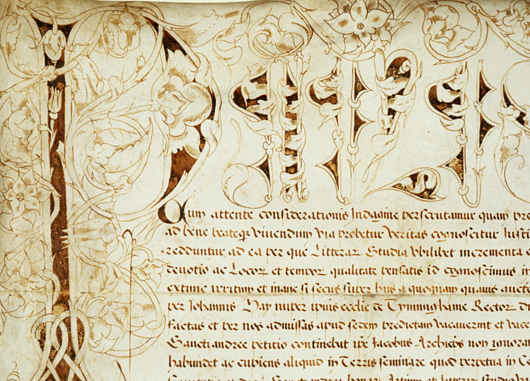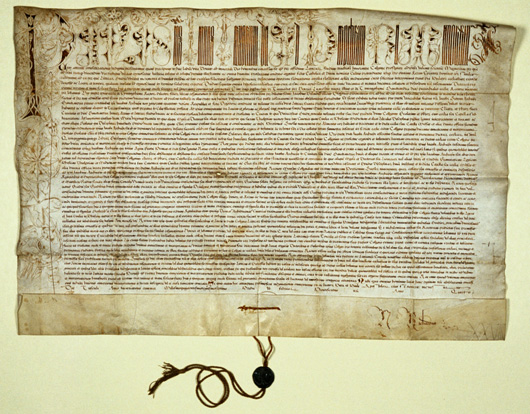475 years of St Mary’s College

Today (Tuesday 12 February 2013) marks the 475th anniversary of the foundation of the University’s home of Divinity, St Mary’s College.
Although officially founded in 1539, the papal bull granting its establishment was received from Pope Paul III on this day in 1538.
The New College of St Mary’s was granted under the supervision of the Archbishop of St Andrews, James Beaton, who first approached the Pope about the foundation after his appointment to the See of St Andrews in 1525. Sadly Archbishop Beaton died just a few days after the official inauguration of the College in 1539.
The bull (pictured above) established ‘a College of clerics, scholars and presbyters with a church or chapel under the invocation of the Blessed Virgin Mary, for the teaching of grammar, logic, natural philosophy, theology and medicine, canon and civil law, with the right to grant its own degrees.’
The College of ‘doctore, regents, masters, chaplains and students’ was intended to have both an academic and a religious purpose. There were daily offering of prayers for the soul of the late King James IV and those of his successors, which explains the prominence of the royal coat of arms on the street frontage of the College building in South Street.
The New College was founded as a seminary of secular priests primarily for work in the archdiocese of St Andrews. It was to be supported by ‘profits, rents and revenues to value of £55 per annum from the uniting, annexation and incorporation of parishes’ of Tannadice in Angus and Tyninghame in East Lothian.
Archbishop John Hamilton secured a fresh authorisation from the Papacy for the reform of the constitution of the college, renewed work on the buildings and, finally, a new charter in 1553-4.
The College began teaching Divinity exclusively in 1579, and under the energetic Principalship of Andrew Melville (1580-1606), it quickly became established as one of the leading theological schools in Europe.
Still housed in its sixteenth-century buildings in St Mary’s Quadrangle, off South Street, the College continues to be recognised today as one of the world’s leading centres of theological scholarship, with an outstanding reputation internationally in both research and teaching, and exceptionally high ratings in student satisfaction.

Image: Papal bull, courtesy University of St Andrews Special Collections.
ENDS
Category University news